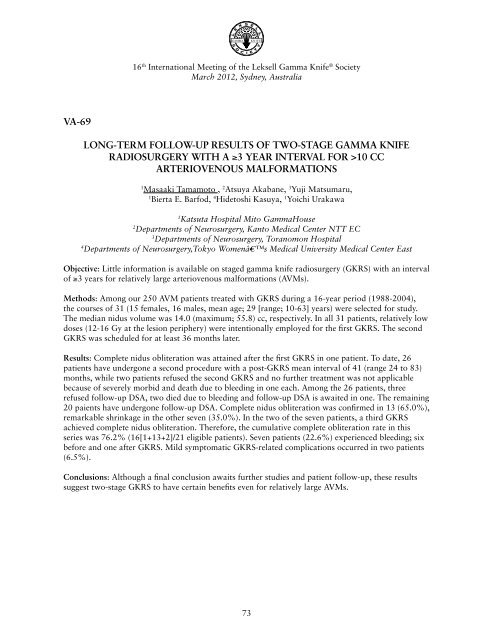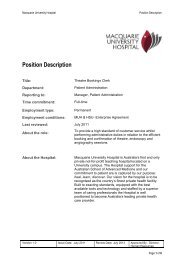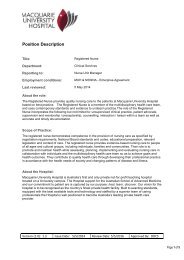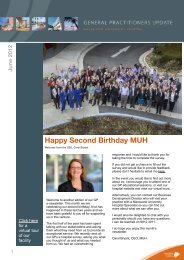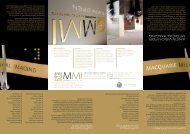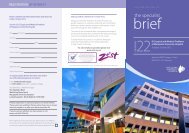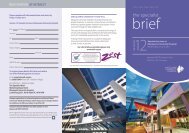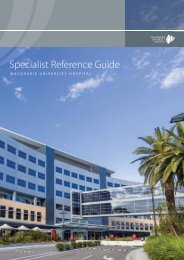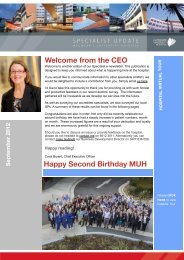Plenary Oral Presentations - Macquarie University Hospital
Plenary Oral Presentations - Macquarie University Hospital
Plenary Oral Presentations - Macquarie University Hospital
Create successful ePaper yourself
Turn your PDF publications into a flip-book with our unique Google optimized e-Paper software.
16 th International Meeting of the Leksell Gamma Knife ® SocietyMarch 2012, Sydney, AustraliaVA-69Long-Term Follow-Up Results of Two-Stage Gamma KnifeRadiosurgery with a ≥3 Year Interval for >10 ccArteriovenous Malformations1Masaaki Tamamoto , 2 Atsuya Akabane, 3 Yuji Matsumaru,1Bierta E. Barfod, 4 Hidetoshi Kasuya, 1 Yoichi Urakawa1Katsuta <strong>Hospital</strong> Mito GammaHouse2Departments of Neurosurgery, Kanto Medical Center NTT EC3Departments of Neurosurgery, Toranomon <strong>Hospital</strong>4Departments of Neurosurgery,Tokyo Womenâ€s Medical <strong>University</strong> Medical Center EastObjective: Little information is available on staged gamma knife radiosurgery (GKRS) with an intervalof ≥3 years for relatively large arteriovenous malformations (AVMs).Methods: Among our 250 AVM patients treated with GKRS during a 16-year period (1988-2004),the courses of 31 (15 females, 16 males, mean age; 29 [range; 10-63] years) were selected for study.The median nidus volume was 14.0 (maximum; 55.8) cc, respectively. In all 31 patients, relatively lowdoses (12-16 Gy at the lesion periphery) were intentionally employed for the first GKRS. The secondGKRS was scheduled for at least 36 months later.Results: Complete nidus obliteration was attained after the first GKRS in one patient. To date, 26patients have undergone a second procedure with a post-GKRS mean interval of 41 (range 24 to 83)months, while two patients refused the second GKRS and no further treatment was not applicablebecause of severely morbid and death due to bleeding in one each. Among the 26 patients, threerefused follow-up DSA, two died due to bleeding and follow-up DSA is awaited in one. The remaining20 paients have undergone follow-up DSA. Complete nidus obliteration was confirmed in 13 (65.0%),remarkable shrinkage in the other seven (35.0%). In the two of the seven patients, a third GKRSachieved complete nidus obliteration. Therefore, the cumulative complete obliteration rate in thisseries was 76.2% (16[1+13+2]/21 eligible patients). Seven patients (22.6%) experienced bleeding; sixbefore and one after GKRS. Mild symptomatic GKRS-related complications occurred in two patients(6.5%).Conclusions: Although a final conclusion awaits further studies and patient follow-up, these resultssuggest two-stage GKRS to have certain benefits even for relatively large AVMs.73


